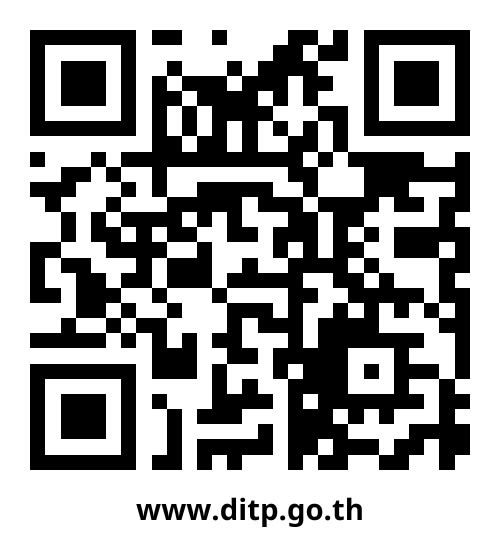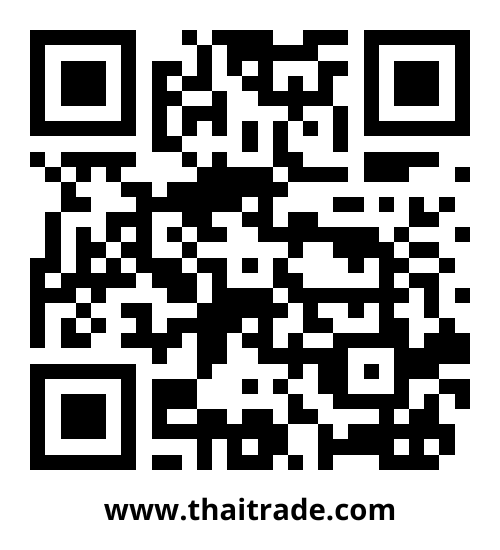Feel the Real You! How to Correct Your Body and Soul by Authentic Thai Wellness?
The health tourism industry is experiencing a consistent rise in growth each year. In fact, Thailand secured the prestigious position of being the second-best Wellness Destination globally in 2020, as per the Global Wellness Institute (GWI). This accolade underscores Thailand’s burgeoning reputation as a hub for wellness seekers worldwide.
Thai wellness, deeply rooted in the country’s cultural heritage, epitomizes a unique form of soft power. It embodies the rich tapestry of Thai and local identities, drawing upon an extensive reservoir of knowledge encompassing Thai traditional medicine, folk remedies, herbal therapies, and alternative healing modalities. This fusion of ancient wisdom and modern wellness practices serves as a compelling allure for tourists, positioning Thailand as a premier destination for holistic health and rejuvenation experiences.
By leveraging its heritage of folk wisdom and traditional healing arts, Thailand has carved a distinct niche in the health tourism sector. This heritage not only distinguishes Thailand from other destinations but also serves as a captivating selling point, enticing travelers seeking authentic and transformative wellness experiences. Thus, Thai wellness emerges not only as a source of cultural pride but also as a cornerstone of the country’s thriving health tourism industry.
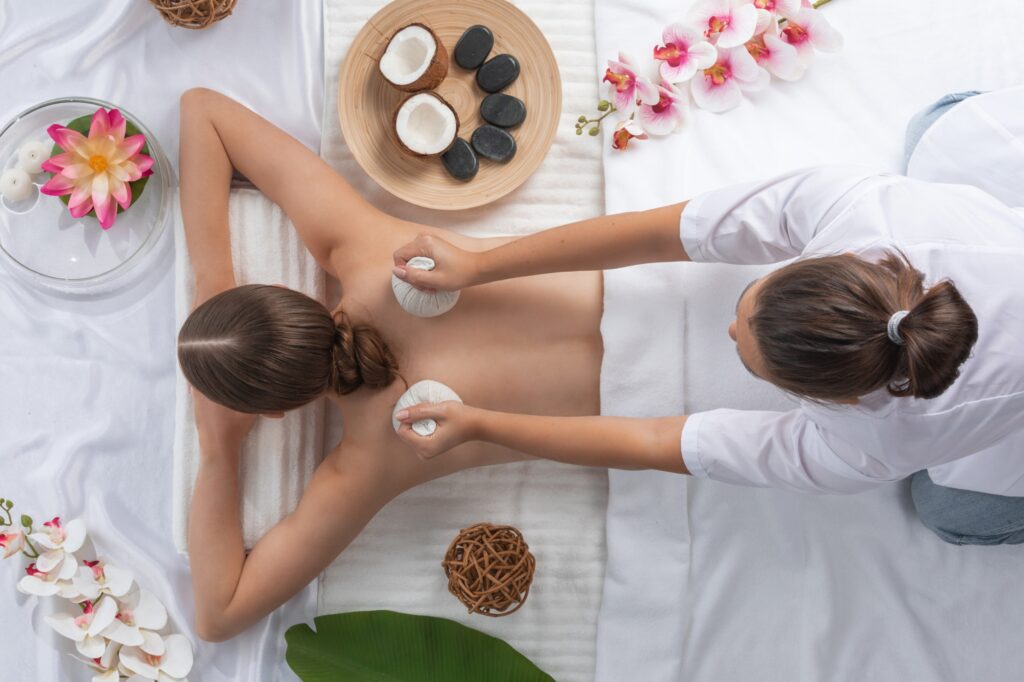
Thai Traditional Medicine: A Heritage of Generational Wisdom
Thai Traditional Medicine
Thai Traditional Medicine represents the profound accumulation of wisdom passed down by generations of Thai ancestors. This invaluable heritage has been meticulously preserved since ancient times, with medicinal knowledge meticulously recorded in textbooks and immortalized on the walls of revered temples. Despite the advent of Western medicine in Thailand, traditional Thai medicine continues to hold sway in patient care, attesting to its enduring relevance and effectiveness.
In more recent times, a new paradigm in Thai traditional medicine has emerged, known as “applied Thai traditional medicine.” This innovative approach seamlessly blends ancient wisdom with modern scientific principles and medical advancements, propelling the evolution of Thai traditional medicine to unprecedented heights. By synergizing traditional healing practices with contemporary scientific methodologies, applied Thai traditional medicine seeks to augment the efficacy and applicability of traditional remedies, catering to the evolving healthcare needs of today’s society.
Traditional Thai medicine encompasses four primary branches, each serving a distinct aspect of holistic healthcare:
- Thai Traditional Medicine: This branch focuses on diagnosing and treating ailments based on the foundational principles of Thai traditional medicine. Drawing from centuries-old wisdom, practitioners employ a variety of techniques to restore balance and promote healing in the body.
- Traditional Thai Pharmacy: Here, the emphasis lies on the meticulous preparation and production of herbal remedies tailored to address specific health concerns. From herbal medicines to bolus formulations, this branch plays a crucial role in preserving and propagating traditional healing practices. Notably, during the Covid-19 pandemic, herbs like Andrographis paniculata garnered attention for their potential therapeutic benefits.
- Traditional Thai Maneuver: Treatment modalities in this branch revolve around therapeutic procedures such as Thai massage, herbal compress therapy, and the specialized Kasai massage. These hands-on techniques aim to alleviate physical discomfort, enhance overall well-being, and restore vitality by targeting specific areas of the body.
- Midwifery: Midwifery services encompass comprehensive care for expectant mothers, extending from prenatal assistance to postnatal support and newborn care. With a deep-rooted understanding of traditional practices and modern obstetric principles, midwives play a vital role in ensuring safe childbirth experiences and nurturing the health of both mother and child.
Applied Thai Traditional Medicine encompasses treatments that build upon the principles of traditional Thai medicine, incorporating additional concepts and theories, particularly concerning the elements. According to this ancient belief system, the human body consists of four elemental components: earth, water, air, and fire. Each individual possesses a unique combination of these elements, with one element predominating as the “host” element. However, this primary element may change over time due to various factors such as age, season, location, and lifestyle choices.
Imbalances among these elemental components are believed to lead to disease or illness. Therefore, in applied Thai traditional medicine, diagnosis and treatment strategies are tailored to restore elemental equilibrium within the body. This involves a holistic approach that combines traditional wisdom with scientific knowledge.
Treatment plans typically include:
- Herbal Medicine: This involves the preparation and administration of herbal remedies tailored to the individual’s elemental composition and specific health needs. Medicines may be prepared as decoctions or dispensed in various formats such as boluses, tablets, or capsules, ensuring optimal efficacy and compatibility.
- Maneuver Treatments: These encompass a range of therapeutic interventions aimed at restoring balance and promoting healing. Techniques may include massage, herbal compress therapy, steam baths, herbal waters, salt pots, charcoal sitting, and skin masking. Each maneuver is carefully selected to address the individual’s unique elemental imbalances and health concerns.
Additionally, practitioners offer comprehensive guidance on various lifestyle factors that impact health and well-being. This may include advice on behavior modification, physical exercise routines, dietary habits, environmental adaptation, and strategies for promoting positive behavior change.
By integrating traditional wisdom with modern medical science, applied Thai traditional medicine offers a holistic approach to healthcare, addressing the root causes of illness while promoting overall wellness and vitality.
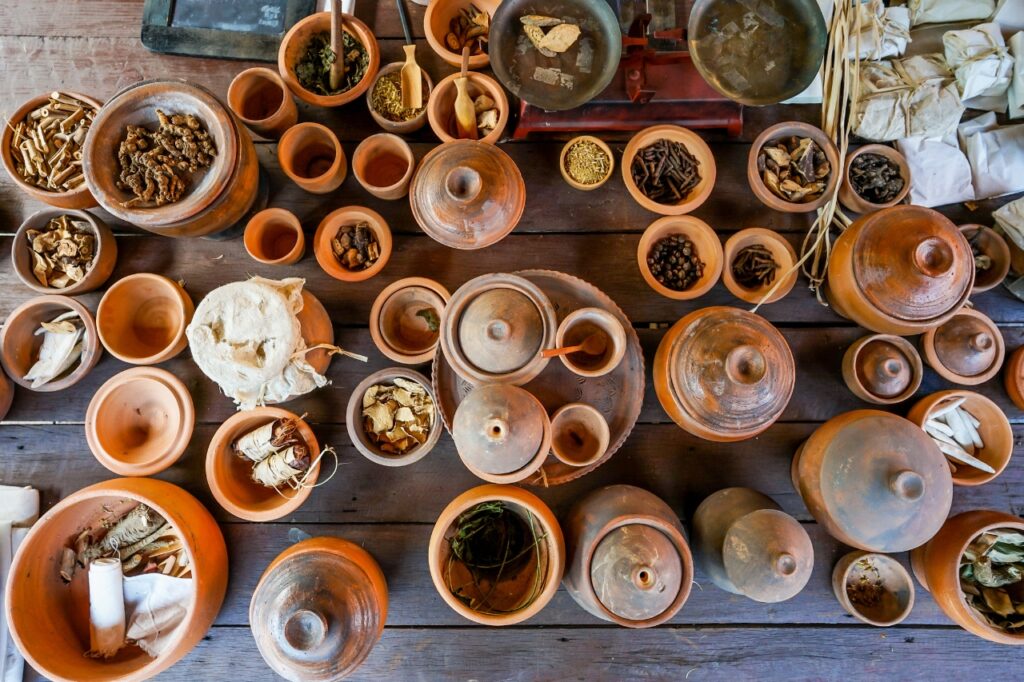
Essential Thai Herbs: From Kaffir Lime to Turmeric, Exploring Nature's Remedies
Applied Thai traditional medicine offers effective treatment for a wide range of symptoms and conditions, including:
- Pain Management: Various types of pain, such as headaches, neck stiffness, shoulder pain, back pain, hip pain, leg pain, knee pain, and muscle aches, can be alleviated through targeted therapies. Additionally, conditions like frozen shoulder, sprained ankles, and calf cramps can be addressed, along with muscle weakness and tension resulting from physical activities.
- Gastrointestinal Issues: Constipation, a common digestive problem, can be effectively managed through applied Thai traditional medicine. Furthermore, this holistic approach can help individuals struggling with insomnia find relief. It also offers support for respiratory ailments like the flu, stuffy nose, asthma, and allergies.
- Neurological Conditions: Symptoms of paralysis, whether partial or complete, can be addressed through specialized treatments that focus on restoring nerve function and promoting rehabilitation.
- Postpartum Care: Women who have recently given birth often experience various discomforts, including lochia (postpartum bleeding), breast engorgement, and reduced milk supply. Applied Thai traditional medicine provides supportive therapies to facilitate postpartum recovery and alleviate these symptoms, promoting maternal health and well-being.
By addressing the underlying causes of these symptoms and employing a combination of herbal remedies, therapeutic maneuvers, and lifestyle modifications, applied Thai traditional medicine offers comprehensive solutions for enhancing overall health and quality of life.
What are the most popular Thai wellness services in Thailand?
Among the plethora of wellness services offered in Thailand, some stand out as particularly popular and effective, drawing on the principles of traditional Thai medicine and applied Thai traditional medicine. These services aim to address a wide range of physical and mental health issues while promoting overall well-being.
In December 2019, UNESCO recognized Thai traditional massage as an intangible cultural heritage, highlighting its global significance. This acknowledgment, announced during the 14th meeting of the Convention Committee in Bogota, Colombia, celebrates the profound cultural legacy and healing traditions of Thailand. It marks the second such honor for Thailand, following the recognition of Khon, a traditional masked dance drama, in 2018.
Here are some of the most notable and sought-after wellness services in Thailand:
1.Nuad Thai, Traditional Thai Massage, embodies the profound philosophy of Thai traditional medicine, where the principles of medical science merge with ancient wisdom to preserve its essence and elevate its efficacy. This traditional art form meticulously standardizes each therapeutic process, leveraging medical science to ensure the highest quality of treatment for patients.
- Court-type Thai traditional massage represents a lineage of wisdom passed down through generations, originating from ancient practitioners who once catered to Thai royalty. This revered form of massage is renowned for its ability to stimulate blood and lymphatic circulation, addressing muscle-related ailments and alleviating pain throughout the body. Particularly beneficial for conditions like back pain and frozen shoulder, this massage technique aids in the rehabilitation of patients, restoring mobility and function.
Distinctive in its focus on modesty and tradition, court-type Thai traditional massage is reserved for esteemed individuals, emphasizing the use of hands and fingers in a manner befitting its royal heritage.
- In contrast, Chaloisak massage offers a more accessible approach to healing, catering to the needs of ordinary individuals seeking relief from various ailments. With its general massage postures and adaptable techniques, Chaloisak massage employs a range of body parts, including fists, feet, knees, and elbows, to enhance energy flow and promote well-being. Unlike its courtly counterpart, this massage style lacks formal rituals, making it suitable for a broader audience seeking therapeutic benefits.
2 Kasai Massage
Kasai massage is a therapeutic approach aimed at addressing bodily deterioration associated with aging. The term “Kasai” signifies the gradual decline of the body over time, leading to imbalances in elements like Pitta (fire), Vata (air-ether), and Kapha (earth and water), according to Thai traditional medicine. This massage technique focuses on stimulating blood circulation and energy flow to restore equilibrium.
Targeting meridian points and circulation lines, Kasai massage facilitates improved blood flow and energy movement, promoting the body’s return to normal function. It benefits both men and women, particularly those experiencing sexual dysfunction due to physical decline.
- Who can benefit from Kasai massage?
Kasai massage is suitable for individuals, regardless of gender, experiencing impaired sexual performance unrelated to stress or chronic illnesses like diabetes or high blood pressure. The massage aims to enhance blood circulation, expel accumulated waste in the reproductive system, and alleviate lower back pain.
- Steps involved in Kasai massage:
During the session, clients change into comfortable attire provided by the therapist. The massage typically lasts 1-2 hours and involves techniques to stimulate blood circulation and energy flow throughout the body. Heat may be applied to the lower abdomen for enhanced results.
3.Cold compresses and hot compresses, also known as cold packs and hot packs, respectively, are two types of compresses used for different purposes.
Cold pack: Cold packs help shrink blood vessels, reducing bleeding and swelling. They are typically used to relieve symptoms such as sprained ankles, bruises, pain, injuries, acute pain, headaches, high fever, nosebleeds, wounds from sharp objects, scalds, and mild burns.
When to use: Immediately or within 24-48 hours after injury or when symptoms appear.
Types of symptoms it is used for: Reducing injuries in the acute phase with pain, swelling, redness, heat, bruises, sprained ankles, sports injuries, wounds from sharp objects, toothache, fever, headache, nosebleeds, burns, or scalds with mild symptoms.
Using a cold compress: The compress should not be too cold. It can be applied using a bag wrapped in ice, or a towel can be used before compressing the painful or swollen area. Apply for 20-30 minutes, 2-3 times a day. Caution should be exercised in individuals who cannot tolerate cold until the muscles become tense or damaged. People who are allergic to cold or prone to rashes should use caution.
Hot pack: Hot packs help expand blood vessels and increase blood flow, which improves blood circulation, repairs injuries, and relieves painful symptoms such as chronic pain, inflammation, stiffness in the joints, menstrual pain, toothache, or engorged breasts.
When to use: 48-72 hours after injury or bruise, or after there is no swelling, redness, or heat in the injured area.
Types of symptoms it is used for: Reducing pain or chronic inflammation, relaxing tight muscles such as neck and shoulder pain, back pain, reducing joint stiffness, cramps, and office syndrome. It can also relieve menstrual pain or breast tenderness during breastfeeding.
How to use: Use a ready-made hot compress gel or a hot water bag supported by a towel. The temperature should not exceed 45 degrees Celsius. Apply to the painful or stiff area for 15-20 minutes, 2-3 times a day. Care should be taken not to apply heat to bleeding areas or open wounds. Caution is necessary in patients with inflamed nerves, such as diabetes, who may have impaired sensation. A hot compress pad should be used to prevent blisters from forming.
4.Herbal Steam Bath
Herbal steam bath is a therapeutic treatment that involves using a combination of fresh or dried herbs boiled to create steam inside an incubator or tent. It is commonly used for therapy and health promotion to stimulate the blood circulation system and relieve muscle aches and pains. Additionally, it helps expand the bronchial tubes, making breathing easier, and aids in expelling amniotic fluid in postpartum women.
During a herbal steam bath session, it is recommended that each round should not exceed 10-15 minutes. After each round, individuals should come out and rest outside the incubator for about 5 minutes before starting another round.
Herbs commonly used in herbal steam baths include kaffir lime skin, turmeric, lemongrass, Thai tamarind leaves, Som Poi leaves, camphor, and other Thai herbs.
The benefits of herbal steam bath include:
- Relieving cold symptoms and nasal congestion: Herbal steam baths can help alleviate symptoms of the common cold and clear nasal passages.
- Aiding in relieving chronic asthma symptoms: The steam from herbal baths can assist in relieving symptoms of chronic asthma by helping the lungs expand and promoting clearer respiratory passages.
- Improving flexibility: Regular herbal steam baths can contribute to improved flexibility and reduced stiffness in muscles and joints.
- Lowering high blood pressure: The expansion of blood vessels induced by herbal steam baths can help lower high blood pressure by facilitating easier blood flow.
- Promoting radiant skin: Herbal steam baths can result in brighter, radiant skin, making individuals feel refreshed and rejuvenated.
- Enhancing sleep quality: The relaxation induced by herbal steam baths can lead to better sleep quality, aiding in overall health and well-being.
- Facilitating postpartum recovery: Herbal steam baths can help postpartum mothers recover more quickly by aiding in the expulsion of amniotic fluid and promoting uterine health.
- Relieving beriberi and numbness: Herbal steam baths can alleviate symptoms of beriberi and numbness in the extremities, providing relief and improved circulation.
- Alleviating muscle and tendon pain: The heat from herbal steam baths can help alleviate muscle and tendon pain, promoting faster recovery and normalization of function.
- Aiding in weight loss: Herbal steam baths may contribute to the reduction of excess body fat, particularly around the abdomen and other areas, leading to improved body composition.
5.Herbal Compress and Steam Massage
Indulge in the soothing blend of traditional Thai massage fused with the therapeutic touch of herbal compresses and steam in our immersive course. Explore the art of Thai massage while mastering the creation and application of herbal compresses, using fresh herbs selected for their healing properties.
Designed for massages aimed at gentle muscle relaxation through the comforting warmth of compresses and the calming effects of herbal steam. Our approach enhances blood circulation, relieves muscle tension, and promotes detoxification, making it ideal for diverse settings with easily accessible equipment, echoing the timeless wisdom of Thai culture and wellness practices.
Renowned worldwide for its dual benefits of relaxation and anti-aging, this cherished technique embodies Thai charm. Its enduring popularity and reputation for excellence are rooted in its quality, adherence to standards, and dedication to providing exceptional service that reflects the essence of Thai identity.
Embark on a journey to discover the allure of Thai herbal compress and steam massage—a treasured tradition celebrated for its therapeutic wonders.
6.Charcoal Sitting is a method used to treat the area of a mother’s stitched wound after childbirth. It involves fumigating the vagina and perineal wound by sprinkling medicinal herbal powder on lit charcoal placed in a chamber underneath a seat. A hole is drilled in the middle of the seat, allowing the heat and herbal smoke to rise up and come into contact with the perineal wound.
Properties: Charcoal Sitting helps to relieve inflammation, promotes drying of the wound, and prevents dampness. It also aids in contracting the uterus, expelling amniotic fluid, and facilitating faster recovery of the uterus.
Suitable for: Charcoal Sitting is suitable for any mother experiencing postpartum symptoms or issues such as insufficient lochia discharge or a perineal wound that is not drying properly. It is particularly beneficial for aiding the uterus to return to its normal position. However, mothers who have undergone a natural childbirth should only undergo Charcoal Sitting after 7 days, while those who have had a C-section or sterilization should wait for 30-45 days.
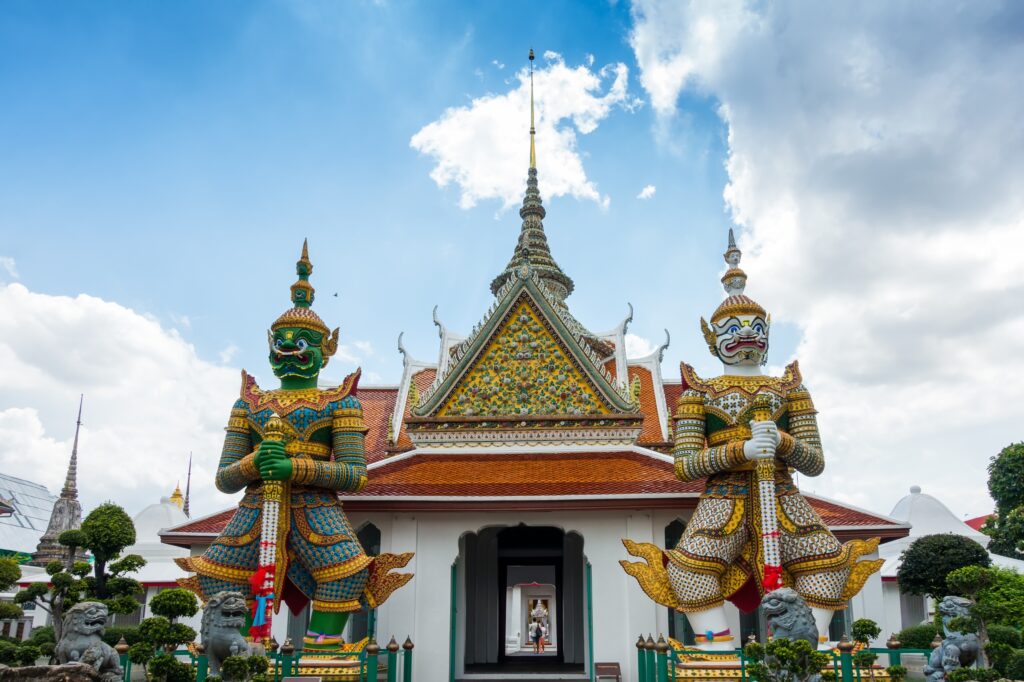
"Yak Wat Pho" (Guardians of Wat Pho) stand at the entrance of Wat Pho, one of Bangkok's iconic landmark and heritage of traditional medicine and massage, where age-old healing traditions are upheld.
Traditional medical school and traditional massage at Wat Phra Chetuphon Wimon Mangkhalaram Ratchaworamahawihan (Wat Pho)
Traditional medicine has deep roots in Thai society, with knowledgeable individuals in every community blending medicinal plants with specific ingredients to create remedies for various ailments and epidemics. In ancient times, there were two types of doctors: court doctors or royal physicians, and local doctors who treated villagers, known as village or community doctors.
During the early Rattanakosin period, His Majesty King Nangklao, King Rama III, granted Phraya Bamrera Rajaphaet, a doctor at the royal court, the honor of leading the inscription of traditional medical knowledge onto ancient slates. These inscriptions were then framed and adorned on the pillars of the balconies surrounding the Maha Chedi and in the pavilions.
In 1856, His Majesty King Chulalongkorn, King Rama V, ordered the royal physicians to translate medical texts from Pali and Sanskrit into Thai. These translated texts were organized into categories and compiled into a book called the “Textbook of Medical Sciences Welfare” (Royal Edition), which included maneuver treatments. This book is also considered another version of the royal massage textbook.
On May 30, 1962, a group of traditional medicine practitioners sought approval from the Ministry of Public Health to establish a school for the Traditional Medicine Association of Wat Phra Chetuphon (Wat Pho) to teach traditional medicine and traditional massage. Since then, teaching has been conducted at two pavilions on the east side.
Today, there are two methods of traditional massage that are widely practiced:
- Thai Hermit Traditional Exercise (Rueshi Dutton)
- Herbal compress massage
Currently, Wat Phra Chetuphon Traditional Medicine School (Wat Pho) has developed and enhanced its teaching standards, gaining trust and recognition both domestically and abroad. The school has also expanded its branches under the names of Traditional Massage School and Chetawan Health School. These branches aim to disseminate management knowledge and provide training in massage and Thai traditional medicine. If you’re interested in more details about the courses, you can visit http://www.watpomassage.com.
Administering the Thai Hermit Traditional Exercise involves physical exercises or acrobatic exercises aimed at achieving perfect health both physically and mentally. It also serves as a method to treat various ailments, such as curing diseases throughout the body and relieving aches and pains. Thai Hermit Traditional Exercise or “Rueshi Dutton” translates to resting postures, relieving aches and pains, and balancing the body systems of the hermit who has practiced asceticism and meditation for many hours a day.
During the reign of King Rama III, it was stated that there were 80 Thai Hermit Traditional Exercise postures, but at present, only 24 postures of the 25 hermit statutes remain. Ruesi Dutton postures are Thai body exercises that have existed since ancient times and focus on breathing exercises and meditation, making them both physical and mental exercises. They also help in treating initial symptoms of illness to a certain extent and make the body alert, strong, and rested. The various positions used also have properties that can treat primary diseases. They are considered very useful, including:
- Helping to create natural movements of the arms, legs, or joints smoothly, emphasizing massage. Some positions involve pressing, squeezing, and massaging.
- Promoting blood circulation and making blood flow easily. It is considered exercise and can be done in every gesture of Thai people.
- Acting as an antidote to disease and maintaining health for a long life.
- Using meditation together to lift the mind from frustration, irritability, lethargy, discouragement, and stress, while also helping to increase the efficiency of breathing when practiced correctly.
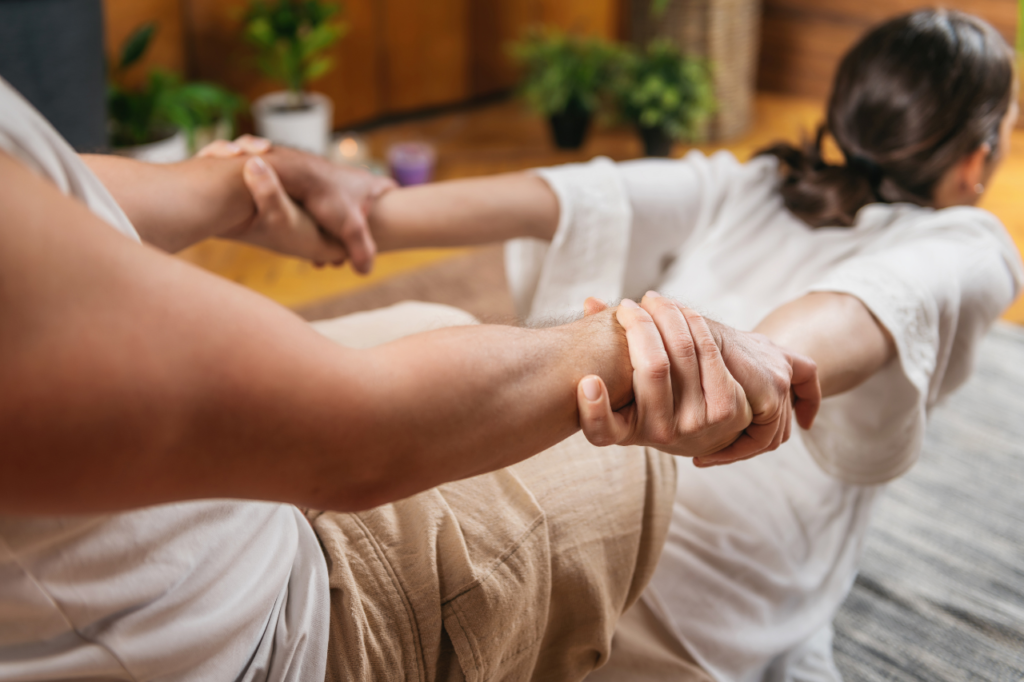
Thailand's Wellness : From Bustling Urban Retreats to Prestigious Traditional Medicine Institutions
Thai Wellness Oasis: Unveiling Thailand’s Premier Destinations and Institutions
In Thailand, renowned massage and spa service providers cater to wellness enthusiasts in bustling areas such as Silom, Sukhumvit, Asoke, Ratchadaphisek, Rama 9, Ratchaprasong Road, Thonglor, and other famous districts. These locations serve as hubs for rejuvenation and relaxation, offering a plethora of popular Thai wellness services to locals and tourists alike. Moreover, across the country, prestigious institutions dedicated to traditional Thai medicine and wellness uphold the legacy of holistic healing. The Thai Tradition Complementary Medicine Hospital, operating under the Department of Thai Traditional and Alternative Medicine, Ministry of Public Health, stands as a beacon of authentic wellness practices. Additionally, facilities like the Traditional Thai Medicine Hospital at Prince of Songkla University and the Center of Applied Thai Traditional Medicine at the Faculty of Medicine, Siriraj Hospital, Mahidol University, offer cutting-edge treatments rooted in traditional wisdom. From the Mor Phon Thai Traditional Medical Center to the Thai Traditional Medical Center at Yanhee Hospital and the Nonthaburi Medical Service Center Hospital, Thailand’s healthcare landscape boasts a diverse array of renowned establishments. Each institution exemplifies Thailand’s commitment to preserving and promoting its rich heritage of holistic health and well-being.



